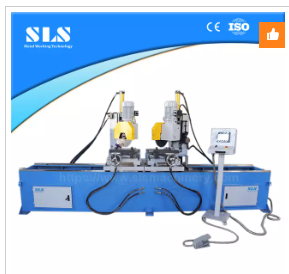Impact of a Steel Pipe Bending Machine on Efficiency
Investing in a steel pipe bending machine can significantly increase efficiency in industrial settings where pipe bending is a frequent task. Below are detailed insights into how these machines enhance operational efficiency.
Increased Production Speed
Time Efficiency
- Rapid Processing: A steel pipe bender can complete bends in just a few seconds per bend, depending on the complexity and the angle. This is a drastic improvement over manual bending methods.
- Continuous Operation: Modern steel pipe bending machines can operate continuously without the need for breaks, maintaining a steady output rate throughout the day.
Cost Reduction
Labor Savings
- Automated Functionality: By automating the bending process, these machines reduce the manpower needed, significantly cutting down on labor costs.
- Decreased Training Requirements: Simplified operation reduces the time and cost involved in training new operators.
Material Efficiency
- Minimized Waste: Precision bending technology ensures efficient use of materials by minimizing waste, which can be particularly costly when working with high-quality steel.
Precision and Consistency
Enhanced Product Quality
- Accurate Bends: Steel pipe bending machines offer precise control over bend angles, achieving accuracy within 0.1 degrees, which ensures high-quality results and reduces rework due to errors.
- Consistent Output: The use of programmable logic controllers (PLCs) allows for uniform production, crucial when creating multiple parts that must fit together perfectly.
Long-Term Benefits
Durability and Reliability
- Robust Construction: These machines are designed to withstand heavy use in industrial environments, ensuring longevity and reliability.
- Low Maintenance Costs: Steel pipe benders require minimal maintenance, typically needing only periodic checks and oil changes.
Scalability
- Adaptability to Increasing Demand: As production needs grow, these machines can handle increased volumes without the need for additional investments in new equipment.
Economic Impact
Return on Investment
- Cost of Equipment: Initial investment for a high-capacity steel pipe bender can range between $30,000 and $100,000. However, the increase in production capacity and reduction in labor costs can lead to a quick return on this investment.
- Energy Consumption: Efficient models might consume around 10 kW per hour, which is cost-effective for the output they deliver.
Considerations Before Investment
Initial Setup
- Space Requirements: Operators must ensure sufficient space in the workshop to accommodate the large size of these machines.
- Training for Advanced Features: While basic operations might be simple, mastering advanced features and programming may require additional training sessions.
Using a steel pipe bending machine significantly boosts efficiency by speeding up production, reducing labor costs, and ensuring consistent, high-quality output. This makes it a crucial asset for businesses looking to optimize their pipe bending operations.
